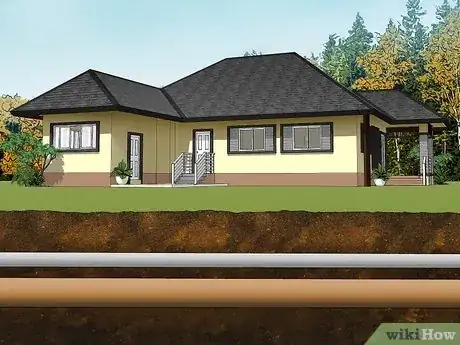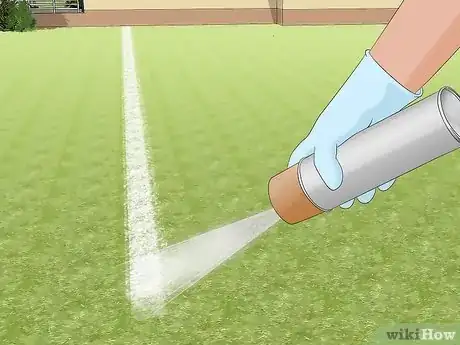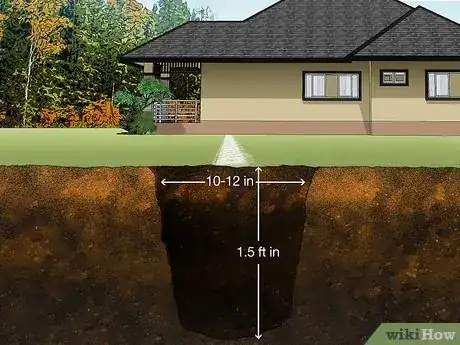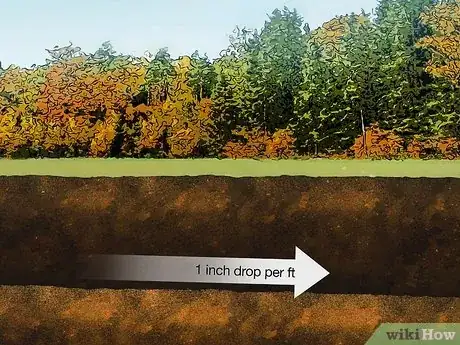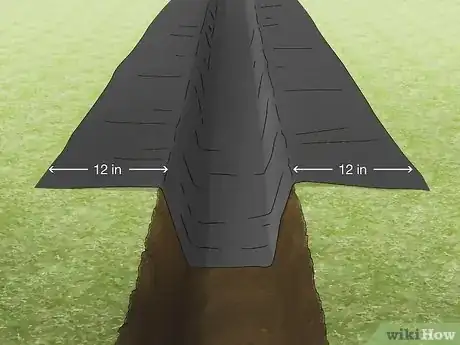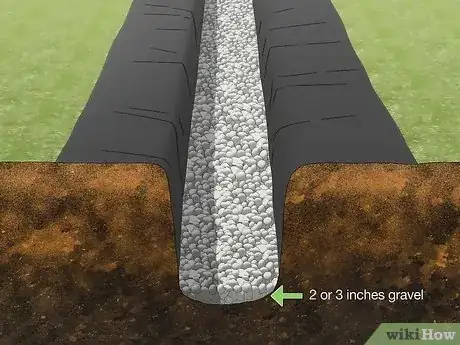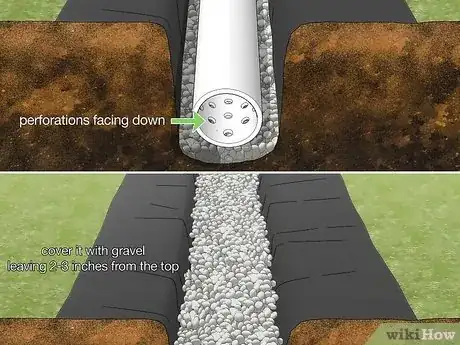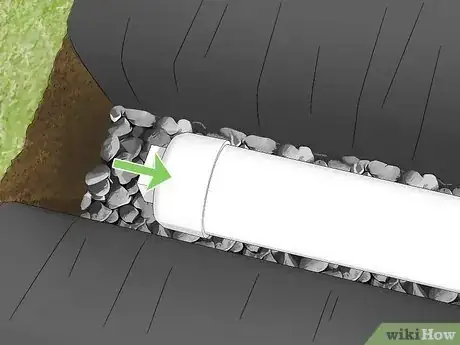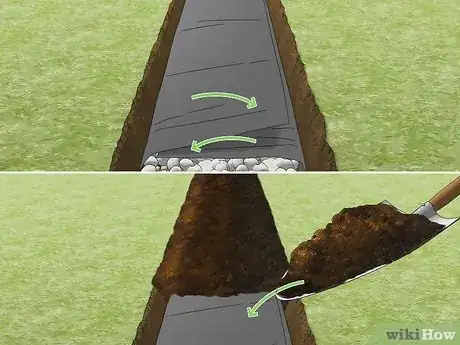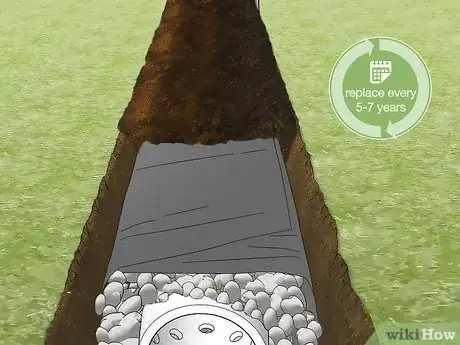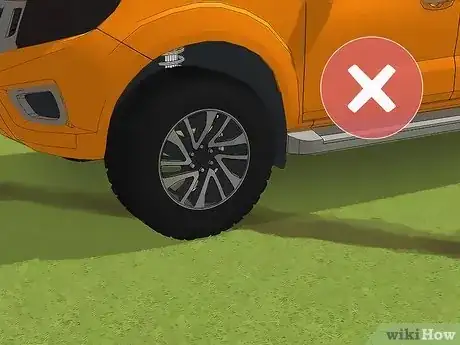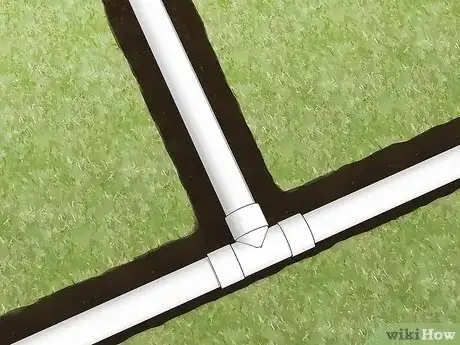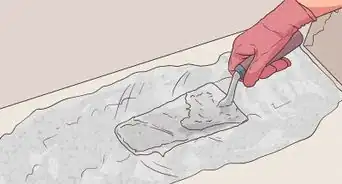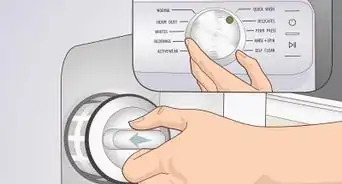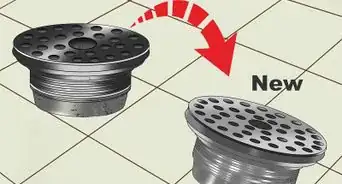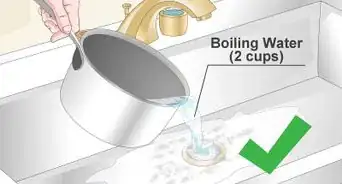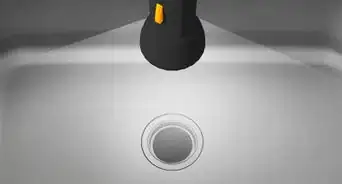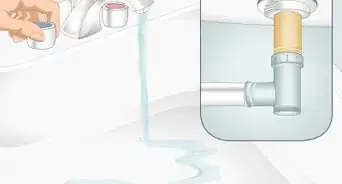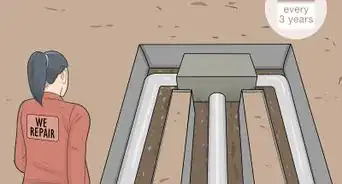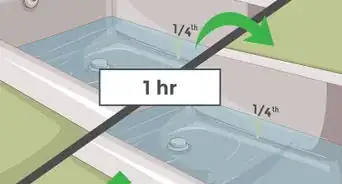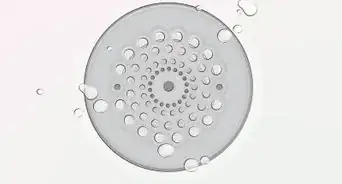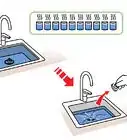This article was co-authored by David Balkan and by wikiHow staff writer, Luke Smith, MFA. David Balkan is a Professional Plumber, CEO of Balkan Sewer and Water Main Service, and President of Balkan Sewer and Drain Cleaning. As a hands-on owner of these companies for over 40 years, David is knowledgeable about water service lines, sewers, and drain line issues. David is a Committee Chairman of the Master Plumbers Council and has sat on the Executive Committee of the Sub Surface Plumbers Association of New York for over 30 years. His knowledge and solution-oriented approach contributed to Balkan Sewer and Water Main Service being the largest and most trusted service in New York City and the recipient of the 2017 Angie’s List Super Service Award.
wikiHow marks an article as reader-approved once it receives enough positive feedback. This article received 21 testimonials and 80% of readers who voted found it helpful, earning it our reader-approved status.
This article has been viewed 1,271,756 times.
Are you finding water pooling on your lawn? Or maybe there’s a bit too much moisture for comfort around your home’s foundation. A French drain system could be the solution. It’s a simple yet versatile bit of landscaping that can be used to drain standing water from problem areas in your yard or around your home. It’s essentially a buried pipe that leads water down a slope. The construction process is fairly simple; it just requires a little preparation and planning, the right tools and materials, and a little DIY know-how. We’ll show you how to plan, dig, install, and maintain a French drain to keep your property free of any troublesome moisture.
Things You Should Know
- Identify any municipal pipes or cables on your property, and plan your drain to flow downhill and away from any structures.
- Dig a trench and line it with landscape fabric. Add gravel to the bottom of the trench before laying down your drain pipe.
- Cover the drain pipe in gravel, then fill in the rest of the trench with the displaced dirt you dug up before.
Steps
Planning and Preparation
-
1Scout for any buried pipes or electrical lines. Before building a French drain in a specific area, locate all underground cables, pipes or other installations that could make digging dangerous in that particular spot. Check with your municipal or public agencies to make sure you have a free area to construct your French drain.[1]
- If you're in the U.S., call the 811 "Call before you dig" hotline, which will connect you to your local call center. An agent will come to your site within a few days to flag any underground hazards like municipal pipes or cables.
- Also be sure to plan your drainage route so it runs at least 1 m (3.3 ft) from any walls or fencing, and try to avoid any posts, shrubs or tree roots.
-
2Call your municipality to check for zoning or runoff regulations. Some municipalities have rules on whether you can build or even dig on your own property, and may require that you obtain a permit before you build any sort of drainage. Speaking with city and/or county officials and working together is in your best interest for this project—better to know you’re in the clear now than get in legal trouble later.[2]
- Also establish whether or not your French drain would cause hardship for neighbors in terms of groundwater runoff. Running excess water onto someone else's land could lead to a potential lawsuit.
- Ideally the French drain runs off in a relatively unused section of land, away from any buildings, into sandy soil which allows water to pass through easily.
Advertisement -
3Mark the dig site on a downhill slope. French drains are essentially buried pipes that use gravity to carry water in the soil away from the problem area. Mark out the path of your proposed drain with landscaping paint, starting it at the problem area, routing it downhill, and ending it away from structures and heavily-trafficked zones. If no natural downward slope exists, reate a slope by digging progressively deeper as you work your way along the trench. [3]
- Sink a couple of stakes on far ends of the line and connect them with a string. Use a leveling tool to measure the grade of the string and slope—ideally, it’ll have a downhill grade of at least 1%, or a drop of 0.125 in (0.32 cm) per 1 ft (0.30 m).
- Never plan your French drain to drain into a neighboring property; it’s almost always illegal, and can pose numerous zoning issues and dangers, regardless.
- Optionally, hire a surveyor or other professional to help pin down the right dimensions and placement for your drain.
Building the Drain
-
1Dig a trench about 10–12 in (25–30 cm) wide and 1.5 ft (0.46 m) deep. Use a spade to dig a trench wide enough to accommodate the drain pipe, plus a bit of room on either side for gravel. Follow your marked route, taking care to avoid any flagged municipal pipes or cables. Enlist the help of a family member, friend, or neighbor if possible.[4]
- Periodically check the depth of the trench as you dig to ensure it consistently slopes downwards. The ditch depth and grade doesn't have to be perfect, but ensure that there are no "bellies" in your drainage, or areas in which water can pool and be held.
- You might also rent a trencher from a hardware store, which is a specialized tool for digging trenches, or use a backhoe, but we recommend using a simple spade, since it’s the most precise and controllable tool.
-
2Line the trench with water-permeable landscape fabric. Roll out your landscape fabric over the trench, pressing it down to fill the contours, then temporarily pin it in place with nails or landscape fabric pins. Ensure the fabric extends about 1 ft (0.30 m) out of either side of the trench.[5]
-
3Add 2 or 3 inches (5.1 or 7.6 cm) of gravel to the bottom of the trench. Shovel the gravel on top of the landscaping fabric. The gravel acts as a foundation for the drainage pipe, keeping it securely in place, and also blocking soil from clogging the pipe.
-
4Lay drainage pipe with the perforations facing down, and cover it with gravel. Lay the drainage pipe atop the gravel along the entire length of the trench—ensuring that the perforations face down improves drainage. Then, cover the pipe with gravel, leaving about 2–3 in (5.1–7.6 cm) of room between the top of the gravel and the lip of the trench.[6]
- Place a cap on the upper end of the pipe to prevent any soil or gravel from entering the pipe and clogging it downstream.[7]
- Alternatively, begin the length of pipe with a downspout catch to more effectively drain water from a targeted area.
-
5Fold the landscaping fabric over the gravel and fill the trench with soil. Cover the gravel with the excess landscaping fabric. Fill in the rest of the trench with the displaced soil.[8] At this point, finish the trench in whatever way you like: lay sod on top, reseed it with grass, or even cover it with a layer of large, decorative stones.
- The bottom end of the pipe will remain below ground, but alternatively, install a drain emitter for easy, above-ground access. Simply attach the emitter to the end of the pipe, and bury it so that its top surface is level with the ground.
Maintenance and Additions
-
1Reinstall the French yard drain every 5-7 years. Your landscaping shifts over time, and the pipe, gravel, and landscaping fabric will deteriorate over the years. In order to keep the drain functioning properly, reinstall it every so often, or whenever it appears to stop working, like when water begins to pool in areas above the pipe, where it ought to be draining.[9]
-
2Keep heavy machinery and livestock off the French drain. Heavy machinery like cars, tractors, or riding lawn mowers can compress the soil and the drain pipe, damaging the French drain and causing clogs or other faults.[10] Leave indicators of the drain’s location for reference, like landscaping flags or lawn decor, to remind you and others of the drain’s location.
-
3Create a T-branch at the end of the drain for better water dispersal. A T-branch is simply another section of pipe that connects to the main pipe at a perpendicular angle. Dig an additional perpendicular trench at the bottom of the initial trench, and use a drain pipe connector to join the pipes.[11]
- With this setup, the water forks off into the T-branch and is dispersed over a wider area, preventing pooling at the bottom of the French drain.
Community Q&A
-
QuestionWhy are the holes of the pipe facing down? Wouldn't you want the water to filter into the pipe from the top holes and drain out from the bottom?
 Bill StaffenCommunity AnswerNo. The water travels to the lowest point in the gravel, which is beneath your pipe. If you put the holes on top, they would probably catch some of the draining water, but most of the water (considering the width of the trench vs. the holes) would actually begin pooling below the pipe. With the holes on the bottom, they are closer to the lowest point and therefore will catch more water because gravity will compel it toward the path of least resistance (in the pipe).
Bill StaffenCommunity AnswerNo. The water travels to the lowest point in the gravel, which is beneath your pipe. If you put the holes on top, they would probably catch some of the draining water, but most of the water (considering the width of the trench vs. the holes) would actually begin pooling below the pipe. With the holes on the bottom, they are closer to the lowest point and therefore will catch more water because gravity will compel it toward the path of least resistance (in the pipe). -
QuestionWhat kind of gravel should be used?
 Community AnswerWashed gravel. The fine sand/clay can clog up your freshly installed French drain.
Community AnswerWashed gravel. The fine sand/clay can clog up your freshly installed French drain. -
QuestionHow do I unplug a stopped-up drain? Water is coming into the garage!
 Community AnswerYou'll need to find access points to the drain. Ideall,y both through the drain in your garage floor and wherever it drains to: the street, sewer, or drywell. You'll probably want to rent the smallest motorized snake (a roto-rooter type machine that has a couple small bits: paddle and screw) you can find to avoid damaging the pipes/drain tiles. Use the snake to go into the drain-line from every entrance you can. The more junctions, the less likely you'll clean it completely. Older homes will often have broken french drain pipes, either from age (with terra cotta or iron), or mechanical breakage (roots, digging, etc.).
Community AnswerYou'll need to find access points to the drain. Ideall,y both through the drain in your garage floor and wherever it drains to: the street, sewer, or drywell. You'll probably want to rent the smallest motorized snake (a roto-rooter type machine that has a couple small bits: paddle and screw) you can find to avoid damaging the pipes/drain tiles. Use the snake to go into the drain-line from every entrance you can. The more junctions, the less likely you'll clean it completely. Older homes will often have broken french drain pipes, either from age (with terra cotta or iron), or mechanical breakage (roots, digging, etc.).
Things You’ll Need
Warnings
- Never use a tamping tool or powered compacting equipment, as it will crush the pipe, causing failure.⧼thumbs_response⧽
References
- ↑ https://www.mass.gov/guides/about-dig-safe
- ↑ https://www.epa.gov/nps/urban-runoff-model-ordinances-prevent-and-control-nonpoint-source-pollution
- ↑ https://extension.wsu.edu/clark/naturalresources/smallacreageprogram/improving-drainage/
- ↑ https://www.fairfaxcounty.gov/soil-water-conservation/drainage-problem-control-runoff
- ↑ https://www.fairfaxcounty.gov/soil-water-conservation/drainage-problem-control-runoff
- ↑ https://www.finegardening.com/article/build-a-french-drain-in-two-steps
- ↑ https://www.finegardening.com/article/build-a-french-drain-in-two-steps
- ↑ https://extension.wsu.edu/clark/naturalresources/smallacreageprogram/improving-drainage/
- ↑ https://www.nridgeville.org/FrenchDrain.aspx
About This Article
To build a French drain, choose a spot with a slight downhill slope, then dig a trench that is about 6 inches wide and 18 to 24 inches deep. Line the trench with water-permeable landscape fabric, leaving at least 10 inches of excess fabric on either side of the trench. Shovel in a layer of gravel along the bottom of the trench, then lay the perforated drain pipe into the trench on top of the gravel. Shovel more gravel over the pipe, then cover the gravel with the excess fabric and fill in the rest of the trench with soil. For more tips from our Professional Landscaper reviewer, including how to make sure your spot is safe to dig in, read on!
